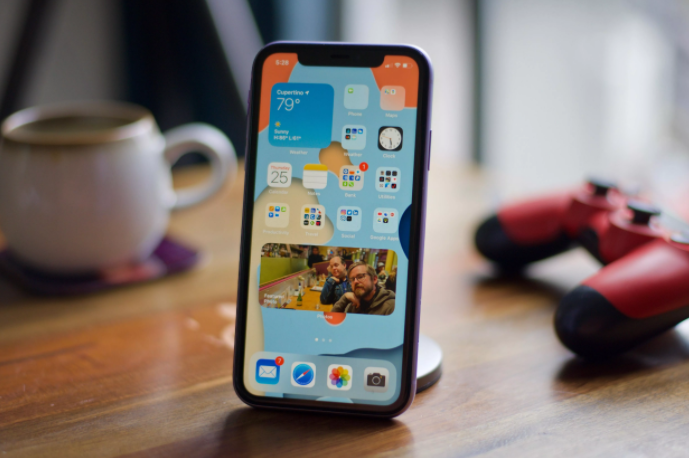In today’s digital age, mobile data has become an essential part of our lives. It allows us to stay connected, access information, and enjoy various online services on our Android devices. However, there are instances where mobile data may not work as expected, causing frustration and inconvenience. If you are facing issues with mobile data not working on Android 13, this comprehensive guide will provide you with practical solutions to troubleshoot and resolve the problem.
The Mobile Data Connectivity Issue on Android 13
The Android 13 update, recently rolled out by Google, has brought several new features and improvements to enhance the user experience. However, some users have reported encountering mobile data connectivity issues after updating their devices to Android 13. This can be frustrating, especially when you rely on mobile data for internet access on the go.
To help you resolve this issue, we have curated a list of methods that have proven to be effective in resolving mobile data problems on Android 13. These methods are simple and can be easily implemented, even if you have limited technical expertise. Let’s dive into the solutions and get your mobile data back up and running.
Method 1: Restart Your Device
One of the most basic yet effective troubleshooting steps is to restart your Android device. Restarting can resolve various software-related issues, including mobile data connectivity problems. To restart your device, follow these simple steps:
- Press and hold the power button on your device.
- A small menu will appear on the screen.
- Select the “Restart” or “Power off” option from the menu.
- If you choose to restart, your device will turn off and then automatically turn back on.
- If you choose to power off, wait for a few seconds after your device turns off completely, then press and hold the power button again to turn it back on.
After restarting your device, check if the mobile data connectivity issue has been resolved. If not, proceed to the next method.
Method 2: Toggle Mobile Data On and Off
In some cases, simply toggling the mobile data option on and off can resolve connectivity issues. To do this, follow these steps:
- Open the “Settings” app on your Android device.
- Scroll down and tap on “Network & Internet” or a similar option.
- Locate and tap on “Mobile network” or “Mobile data.”
- Toggle the switch next to “Mobile data” to turn it off.
- Wait for a few seconds, then toggle the switch again to turn mobile data back on.
After toggling the mobile data option, check if you can connect to the internet using mobile data. If the issue persists, proceed to the next method.
Method 3: Clear Mobile Data Cache Storage
Clearing the mobile data cache storage can help resolve connectivity issues caused by corrupted cache files. Follow these steps to clear the cache storage:
- Open the “Settings” app on your Android device.
- Scroll down and tap on “Apps” or “Applications.”
- In the app list, tap on the three dots at the top right corner of the screen.
- Select “Show system” from the dropdown menu.
- Now, navigate or search for “Mobile data” in the app list.
- Tap on “Storage usage” or a similar option.
- Tap on “Clear data” and “Clear storage” if these options are available.
- Restart your device and check if the mobile data connectivity issue has been resolved.
Method 4: Check SIM Card and SIM Slot
Sometimes, issues with the SIM card or SIM slot can cause mobile data connectivity problems. Follow these steps to ensure that your SIM card is properly inserted and functioning:
- Power off your Android device.
- Locate the SIM card tray (usually on the side or top of the device).
- Use a SIM ejector tool or a small paperclip to eject the SIM tray.
- Remove the SIM card from the tray.
- Inspect the SIM card for any visible damage or dirt.
- Reinsert the SIM card into the tray, making sure it is securely placed.
- Slide the SIM tray back into the device.
- Power on your device and check if the mobile data connectivity issue has been resolved.
If you are using dual SIM cards, consider swapping the SIM cards between slots to see if the issue persists. If the problem continues, proceed to the next method.
Method 5: Disable Battery Optimization
Battery optimization features on Android devices can sometimes interfere with the background processes of certain apps, including those responsible for mobile data connectivity. Disabling battery optimization for the relevant apps can potentially resolve the issue. Follow these steps to disable battery optimization:
- Open the “Settings” app on your Android device.
- Scroll down and tap on “Battery” or “Battery & performance.”
- Look for an option called “Battery optimization,” “Battery saver,” or similar.
- Tap on it to open the battery optimization settings.
- Find the apps related to mobile data or internet connectivity.
- Disable battery optimization for these apps by selecting “Don’t optimize” or a similar option.
After disabling battery optimization for the relevant apps, check if the mobile data connectivity issue has been resolved. If not, proceed to the next method.
Method 6: Reset Network Settings
Resetting the network settings on your Android device can help resolve issues related to Wi-Fi and mobile data connectivity. However, please note that this will remove all saved Wi-Fi networks and Bluetooth pairings. Follow these steps to reset the network settings:
- Open the “Settings” app on your Android device.
- Search for “Reset network settings” using the search bar at the top of the screen.
- Tap on the “Reset network settings” option when it appears in the search results.
- Confirm your action by tapping on “Reset settings” or a similar option.
After resetting the network settings, reconnect to your Wi-Fi network and check if the mobile data connectivity issue has been resolved.
Method 7: Update Your Device
OEMs and Google regularly release updates to address bugs and issues in the operating system. If an update is available for your Android device, installing it may resolve the mobile data connectivity problem. Follow these steps to check for updates and update your device:
- Open the “Settings” app on your Android device.
- Scroll down and tap on “System” or “System updates.”
- Tap on “Check for updates” or a similar option.
- If an update is available, follow the on-screen instructions to download and install it.
- Once the update is installed, restart your device and check if the mobile data connectivity issue has been resolved.
Troubleshooting Mobile Data Not Working on Android 13: Final Thoughts
Mobile data connectivity issues can be frustrating, but with the right troubleshooting steps, they can be resolved. In this guide, we have provided you with practical solutions to troubleshoot and fix mobile data problems on Android 13. By following these methods, you can regain access to reliable mobile data connectivity on your Android device.
Conclusion
If you are still experiencing difficulties with your mobile data after trying these methods, we recommend reaching out to your device manufacturer or service provider for further assistance. They may be able to provide specific troubleshooting steps or insights tailored to your device and network.
Remember, staying connected is essential in today’s digital world, and we hope this guide has helped you resolve the mobile data connectivity issue on your Android 13 device. Enjoy uninterrupted internet access and make the most out of your Android experience!
If you are experiencing difficulties with your device, check out our “How To” page to learn how to resolve some of these issues.




